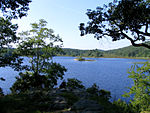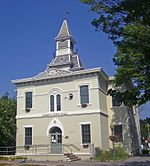Legoland New York
2021 establishments in New York (state)Amusement parks in New York (state)Amusement parks opened in 2021Buildings and structures in Orange County, New YorkGoshen, New York ... and 4 more
LegolandOperating amusement parksTourist attractions in Orange County, New YorkUse mdy dates from November 2022
Legoland New York Resort is a theme park in Goshen, New York owned by Merlin Entertainments. Consisting 150 acres (61 ha) of seven Lego themed lands on a property of 500 acres (200 ha). The park contains numerous structures and attractions made of Lego or designed to resemble Lego. The park initially cost $500 million and took five years to construct. The theme park opened on May 20, 2021, as a soft launch for people who purchased exclusive "1st to play" passes. The official opening for the general public took place on May 29, 2021, making Legoland New York Resort the first outdoor theme park addition to the northeast since 1974.
Excerpt from the Wikipedia article Legoland New York (License: CC BY-SA 3.0, Authors).Legoland New York
Harriman Drive,
Geographical coordinates (GPS) Address External links Nearby Places Show on map
Geographical coordinates (GPS)
| Latitude | Longitude |
|---|---|
| N 41.378055555556 ° | E -74.313333333333 ° |
Address
Legoland New York
Harriman Drive
10924
New York, United States
Open on Google Maps










